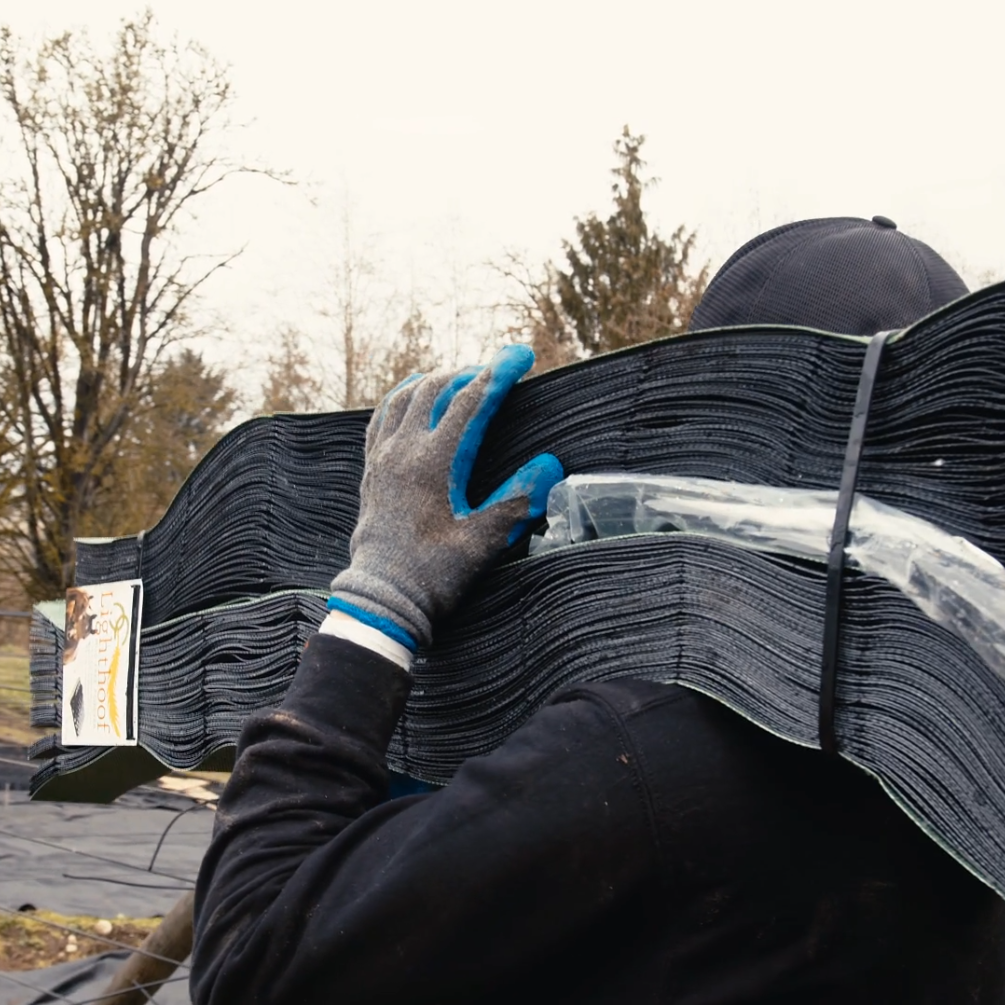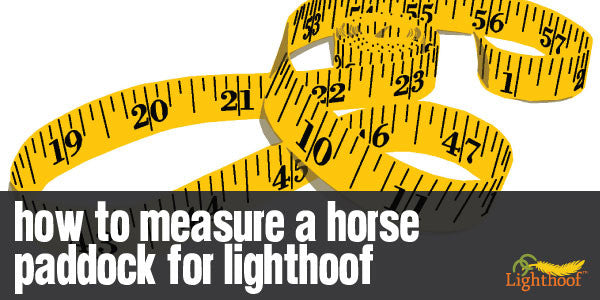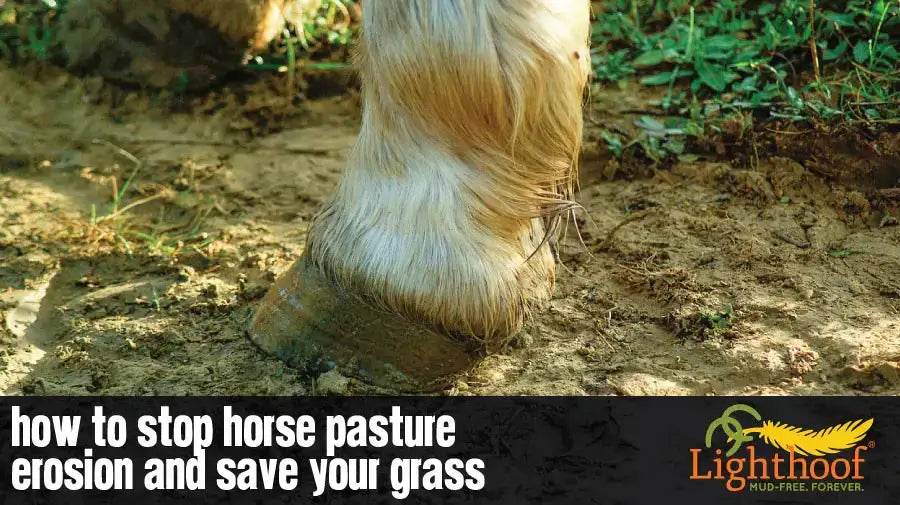Many of us have tried laying outdoor fabric under our paddock footing to try and prevent mud. Keeping horses is quite an expense and anywhere we can save a dollar or two, we’re tempted! So when someone suggests just laying landscaping fabric, plastic sheeting, or some other geotextile under new paddock footing, we want this to be a good option!
Unfortunately, the truth is that fabric under your paddock footing is not a long-term solution for keeping mud away. And it can create dangers for your horse as well.
Fabric alone doesn’t provide firm structure for your footing.
Horses have small hooves in relation to their body weight. Each step plunges the hard hoof downward into paddock footing. This action pushes the footing and the fabric downward into the wet ground below. Soft and pliable, the fabric gives easily, creating a deep and narrow hole. The fabric doesn’t stretch to create this hole--instead, the edges pull inward, shifting the entire sheet just a bit. Another step creates another hole and pulls in the edges more.
Your horse takes thousands of steps each day in the paddock. It doesn’t take long before the fabric becomes a hole-filled, wrinkles mess and the edges are feet away from your fence line.
Footing disappears into holes.
Something has to fill the holes that your horse’s hooves create. As more and more of your footing fills the new holes your horse creates with each step, there is less on the surface. You need to replace footing material in short time.
Receding fabric edges drag footing away from the fence line.
As the fabric pulls away from your fence line, it takes your footing with it. That quickly exposes the mud along the perimeter of your paddock, which is a high-traffic zone for most horses. Your horse is walking and standing in mud again!

Receding fabric edges become exposed and create dangerous tangles.
It’s very easy for a horse to trip or even get a foot tangled in the wrinkles and tears. Fabric under paddock footing quickly becomes a hazard.
Active horses and diggers quickly destroy fabric.
If your horse tends to play and run in the paddock or if you have a digger in your equine family, fabric alone under footing will last even less time. In fact, once fabric is exposed, many horses enjoy tugging it and playing with it. This exposes mud instantly!
Fabric alone under paddock footing may seem like an inexpensive solution now. But when you factor in these costs, it gets expensive quickly:
• Replacing fabric every few months or every year
• Replacing footing every few months or every year
• Vet bills from equine injuries
• Treatments for thrush and skin infections caused by the exposed mud
Making the up-front investment in Lighthoof saves you money in the long run. Lighthoof is a permanent solution that lets your horse live mud-free forever. The key difference is that Lighthoof provides a firm and stable structure for your footing, not just a soft lining beneath it.
The best solution is this: Lay landscape fabric in the paddock, over your old footing or bare dirt/mud. This provides a barrier. Then you lay the stretched Lighthoof panels over the fabric. They provide a skeletal structure for the gravel. You then pour and compact the gravel into the cells of the Lighthoof panels. The result is a solid base that stands up to the impact of your horse’s weight on small hooves. You can place a layer of your favorite footing over that, such as sand or loose gravel.
For more information on how to protect your horses and your paddocks from mud and/or fabric issues, subscribe for updates!




Leave a comment
This site is protected by hCaptcha and the hCaptcha Privacy Policy and Terms of Service apply.